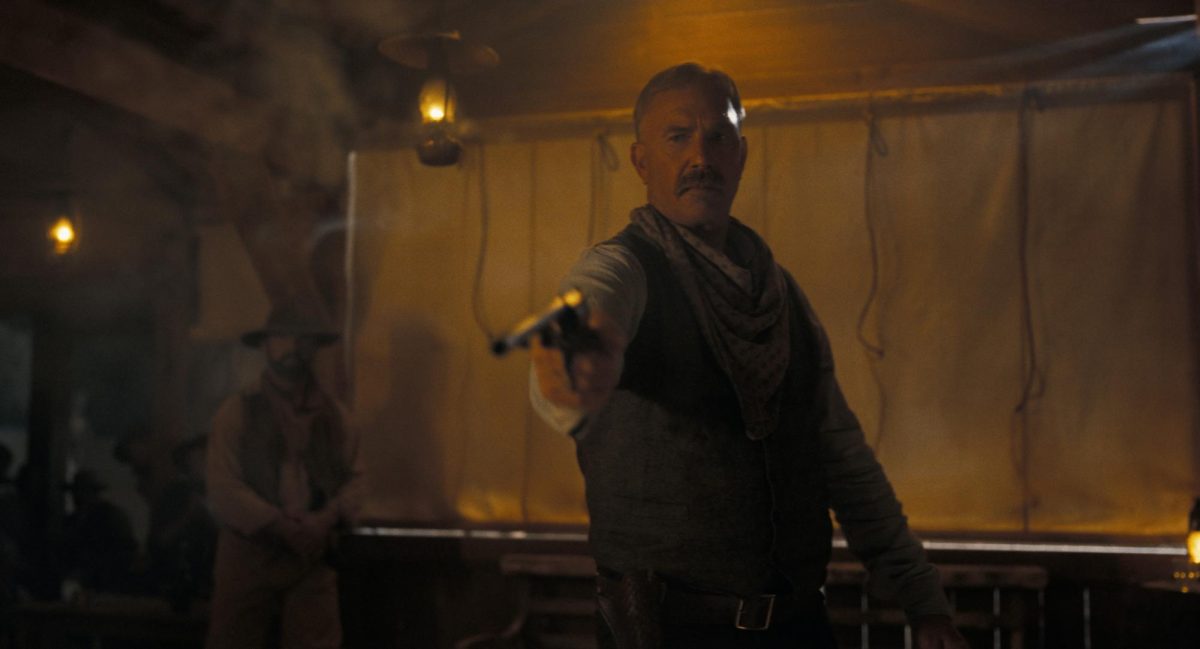Whether you’re a long-time fan of the genre or haven’t yet discovered the delight contained within the slim pages of a comic book, Let’s Go to Utah is definitely worth your time.
The book was created by Dave Chisholm-member of multiple bands, NBA-theme-song trumpet player and full-time graduate student of music.
Don’t allow the cheesy, faux guide-book title of Chisholm’s comic to fool you. Let’s Go to Utah is full of six-shooters, baseball bats, a healthy amount of violence, a Socratic sociopath, a headless cowboy and a suitcase full of money-all perfect reasons to give it a look.
It’s the story of a man named Dave who, after a series of nightmares deicides that his true calling in life is in Utah. In need of a ride, Dave is hooked up with Lief-a friend of a friend-and the trip begins. The only problem is that Lief complicates things immensely because of a little problem he has that involves killing people. It makes Dave’s life worse and there’s no guarantee he’ll arrive at his destination in one piece-much less still breathing.
Let’s Go to Utah is a product of the deep understanding of comics possessed by its creator. The comic manages to escape the oft-employed clichés of its indie peers and at the same time present a series strong in structure and storytelling.
Chisholm might be an unlikely comic creator because music, not comics, has been his primary focus for the majority of his life. Besides studying for a teaching career in music, Chisholm is also a member of local acts Let’s Become Actors and Slajo. In fact, it was experiences gained while touring for Slajo that informed a large portion of the story in Let’s Go to Utah. But Chisholm’s emphasis on music should not downplay the large impact comic books have had on him.
“I’ve been reading comics since I can remember,” Chisholm said. “My parents would give me and my brother comic books from the tooth fairy and hide them under our pillows.”
Chisholm’s long history with the comic book, coupled with his knowledge of music, gives him an interesting perspective on the comic book form, one that draws extensively from his experience as a musician.
It’s no secret that comic books are often looked down on in the art world as inferior, subsidiary forms of discourse.
“A lot of people look at comics and think it’s really bad wall art,” said Chisholm.
The origin and history of this discrimination is too long a topic to discuss here, but it’s an issue any comic creator must deal with eventually. Different from these older prejudices are the indie comic clichés, which most agree the genre is guilty of. The squeaky-clean superhero and the lack of strong lead female characters are two obvious conventions that come to mind. Others are less obvious, but equally pervasive.
“Too often with comic books, especially indie, pulp, and noir comics, you’ll have the hard-boiled narration going on the whole time that’s overwrought and overdone,” Chisholm said.
For those unfamiliar with what Chisholm’s talking about, it’s a bit like the so over-the-top-it’s-hilarious narration on the TV show “When Good Pets Go Bad.” Chisholm avoids this cliché by adhering to a few simple guidelines he set for himself. Let’s Go to Utah has no internal monologue, leaving no room for the ominous noir narrator. In addition to this, almost everything is shown from the protagonist’s point of view. With these two rules in place, Let’s Go to Utah has already abandoned the banality of plot contained within a large portion of other indie comics.
And then Chisholm brings his knowledge of music to bear on his comic creation.
What can music possibly have in common with a completely non-audible medium like the comic book? The two are not as disparate as you might think. A comic creator sets the tempo of a comic using a variety of strategies like image size, placement, type and number on the page.
“Some panels you leave open whereas with some panels you want more detail, you want to fill it in more,” said Chisholm.
In this way Chisholm can be seen as acting as a composer of music in his comics, dictating the pace of the reader in a musical way.
“It’s like the whole Pixies loud-soft, loud-soft thing, it’s how you create drama,” he said.
Another similarity shared by both comics and music which Chisholm explores is self-similarity, or fractal geometry: a case in which an object, be it a piece of music, a molecule or a comic book, resembles itself on many different levels of magnification, from many different perspectives. Any given song may have its own arc, its own climax and resolution, and also participate in cooperation with other songs on an album in a larger scale, having its individual song structure reflected in a larger way.
This sort of thing occurs in the plot construction of comics like Animal Man and The Filth by Grant Morrisson, and in the narrative-within-a-narrative frame of Mark Z. Danielewski’s House of Leaves-not to mention Dave Chisholm’s Let’s Go to Utah. This play with semblance and scale is not a new idea-it can be found in many forms of art, including comics and music.
Perhaps it’s Chisholm’s extensive experience in the latter that explains its strong presence in Let’s Go to Utah, a promising series proud to call itself a musician’s comic book.








